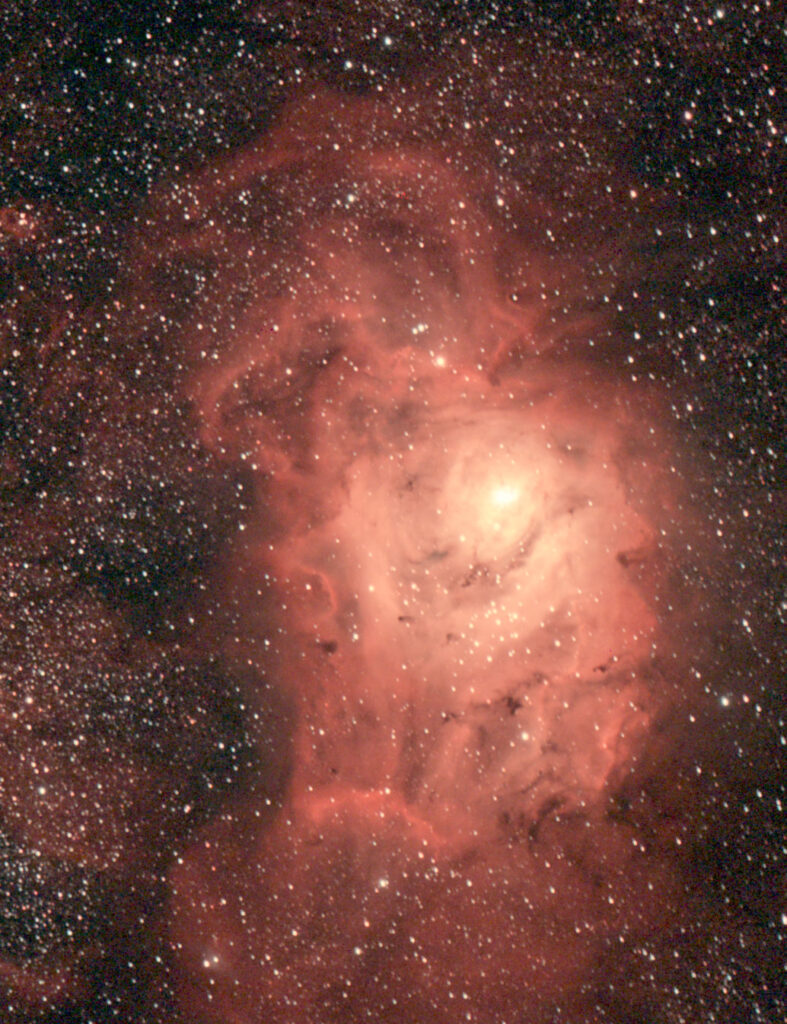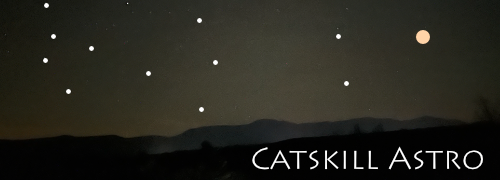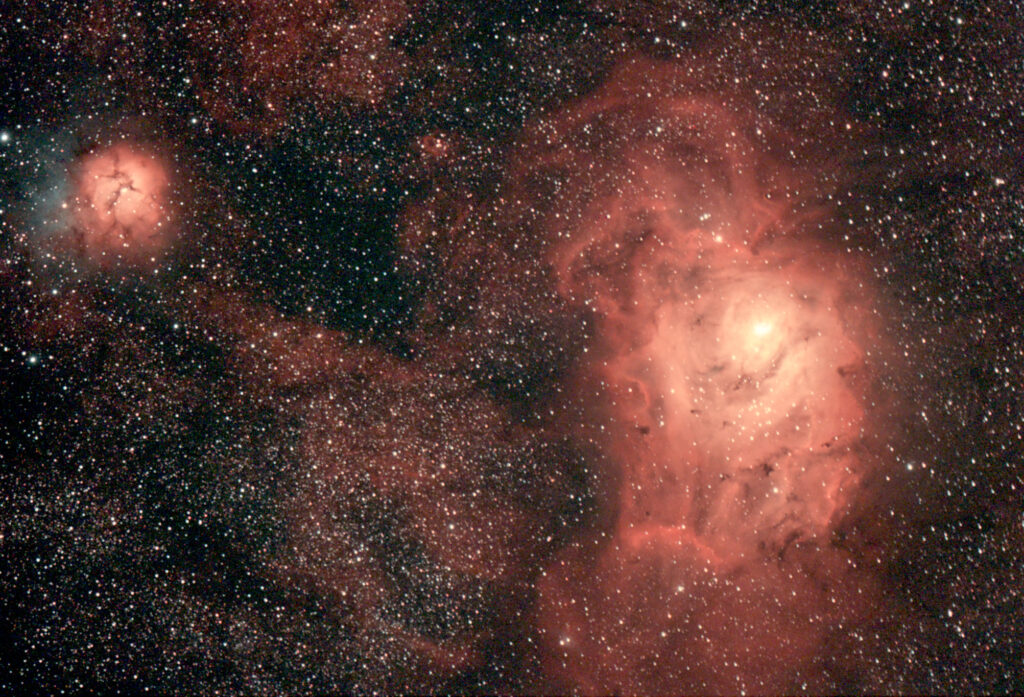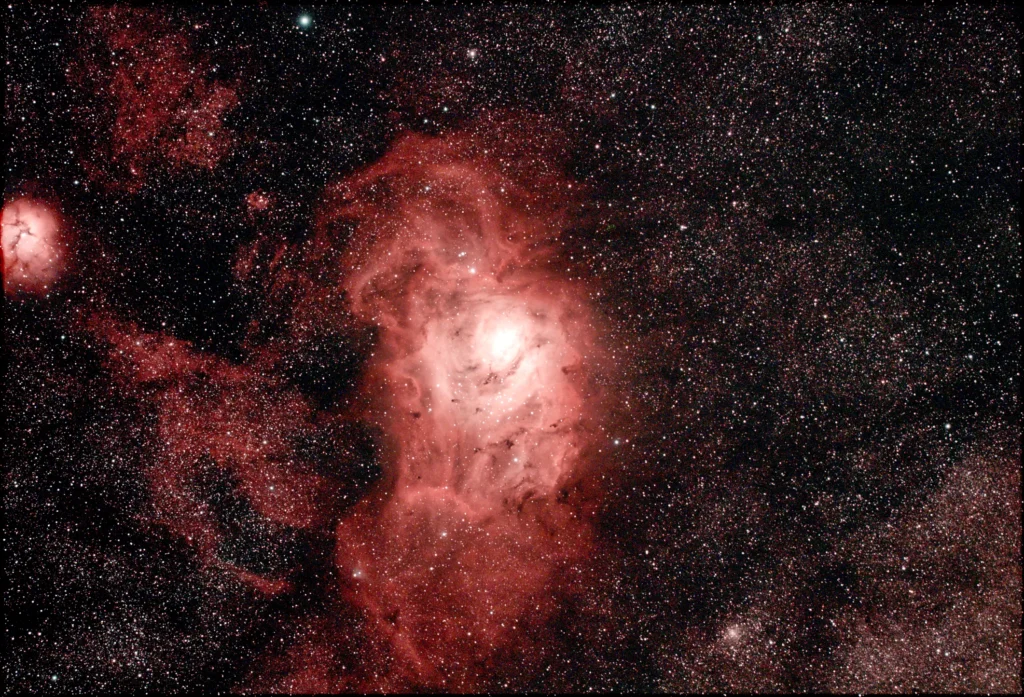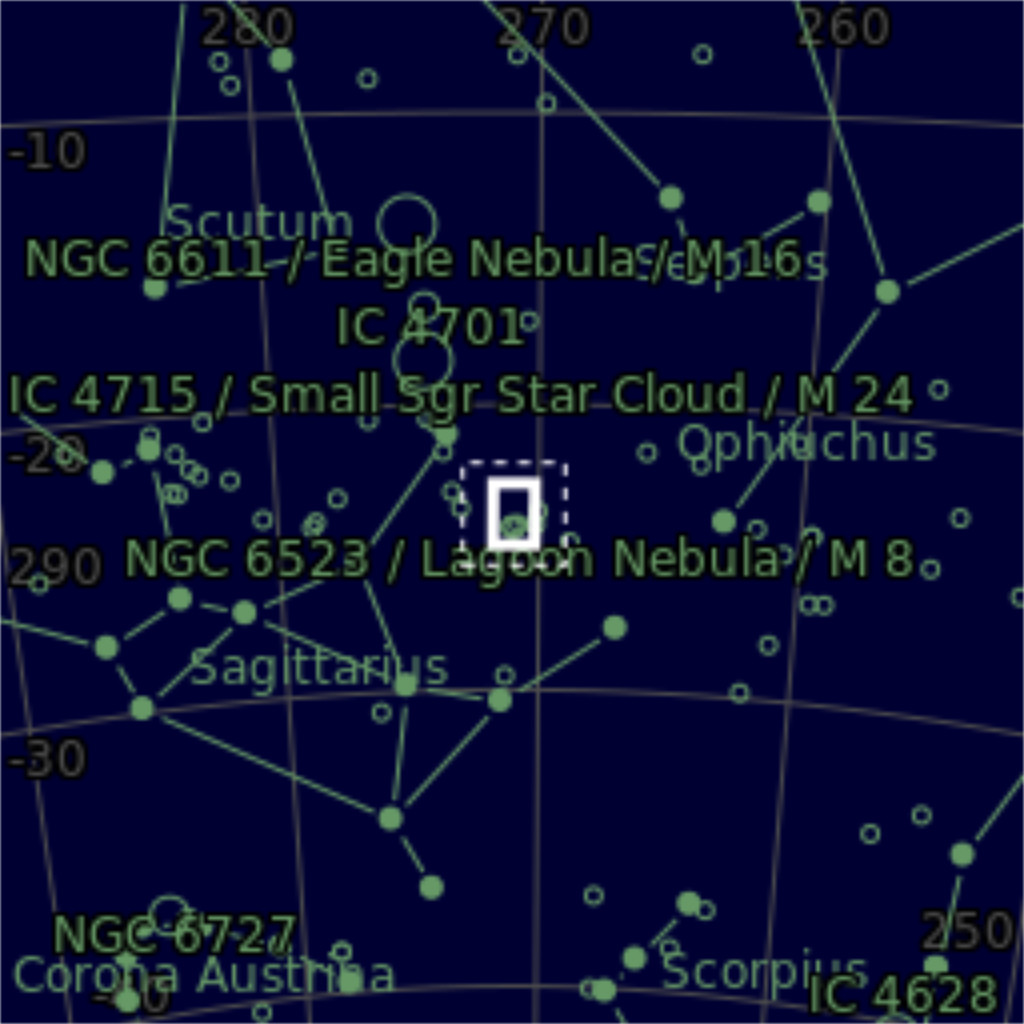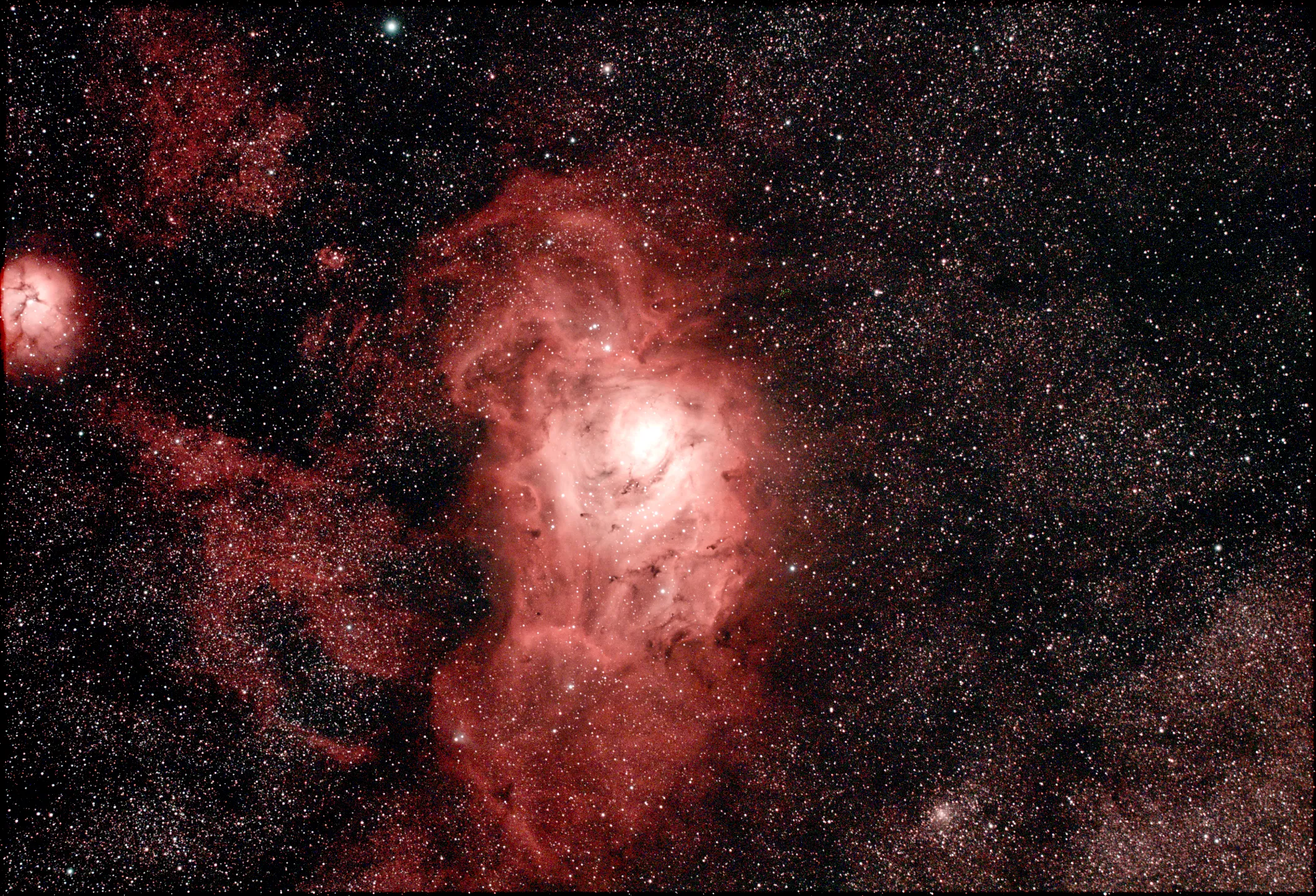| Description | The Lagoon Nebula was discovered by Giovanni Hodierna before 1654[5] and is one of only two star-forming nebulae faintly visible to the eye from mid-northern latitudes (the other being the Great Orion Nebula). This is the final object Messier cataloged on May 23, 1764, the same date as M5 through M8: "A cluster which appears in the shape of a nebula when observed with an ordinary telescope of 3 feet [FL]; but with an excellent instrument one perceives nothing but a large quantity of small [faint] stars; near this cluster is a fairly bright star, surrounded by a very faint glow". <--> I've provided two observations here, about 4 days apart. The initial visit captured the Lagoon Nebula effectively, but was inadvertently framed to cut off the Trifid Nebula (M20) - 3rd image in gallery. The return visit, was properly framed to show M20 in context (gallery images 1 & 2) but seeing and transparency were inferior to the first night. Obviously -- with today's technology -- M8 and M20 are part of the same HII star-birthing complex. 18th century telescopes had narrow fields of view, limited resolving power, and lacked filters to allow naked-eye observation of the HII cloud which is the dominant feature of the complex to modern eyes. I struggled to identify Herschel's "hourglass" which he called out as an important feature. I realized that, in order to bring out the connection between M20 and M8 I had completely blown out the bright core and obscured the "hourglass". I went back to SharpCap's unstretched stack, and there it was (4th image in gallery). Clearly the single brightest feature in the complex. But something I'd completely "blown out" in all of my previous observations. |
